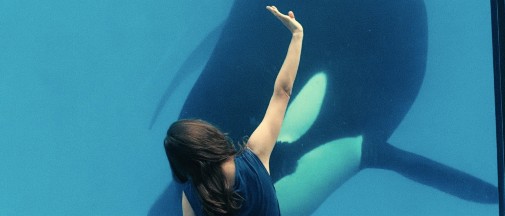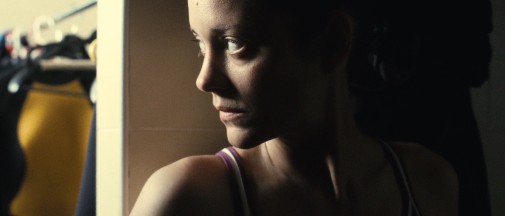
Throughout the years, the Oscars' most polyglot acting category has been Best Actress, amassing twenty nominations and two victories for performances in non-English languages. Those winners, Sophia Loren (1961, Two Women) and Marion Cotillard (2007, La Vie en Rose), are also the two of the four women to nab more than one nod for acting in their native non-English tongue. That's not the only factor that makes Cotillard's awards history a strange affair. She's also one the very few actors to get attention from the four major precursors (BFCA, HFPA, BAFTA, SAG) for her work in "foreign language" films, a feat she accomplished twice. Strangely enough, it wasn't for the same two productions that got her the Academy's attention!
Marion Cotillard's take on Edith Piaf got nominated for everything and, in the end, conquered her a little golden man. Still, five years later she was royally snubbed, becoming only the second person to get those four precursor nominations and fail to enter the Oscar line-up. The film was Jacques Audiard's Rust and Bone and the performance remains one of Cotillard's greatest achievements…
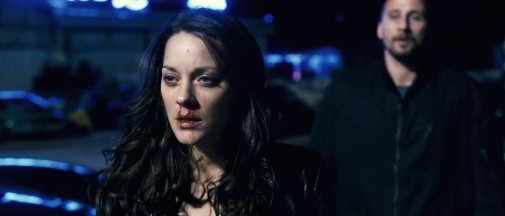
Despite being one of its protagonists, Marion Cotillard's Stéphanie, an obstinate orca trainer, is neglected by a screenplay that's more interested in the male half of its gritty romance. She doesn't appear until 15 minutes into the film, though it's one hell of an entrance. It happens in the middle of a brawl at a bar that Matthias Schoenaerts' handsome asshole works at. The camera looks down and finds the legs of a woman who's been thrown to the ground. Soon we see her face, blood coming out of her nose and her expression set in an ugly vision of hostile disdain. She may have been knocked down, but there's still fight inside of Stéphanie, who's always quick to dismiss offers of help, even when she needs it.
Considering some of the overwrought twists of Rust and Bone, it's fascinating to see Cotillard refuse to play to the audience's sympathies. Her Stéphanie is no sensuous protagonist or weepy heroine, but an abrasive creature. She's a feral cat, angry and beautiful, ready to draw blood from whoever comes too close. Her eyes shine with contempt and there's a sense of trepidation to how she holds herself, confident with a hint of defensiveness. The actress also knows when to hold back and resolve a scene with smart minimalism. See how she paints the entire history of a failed relationship through a disaffected stare and a biting line delivery. Nothing else is needed.
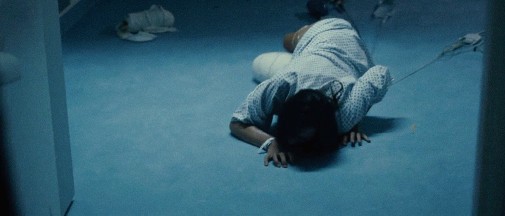
That said, these early moments of Stéphanie's story are fleeting, almost dismissible in comparison with what's to come. One day, while performing with her beloved killer whales, the animal trainer is the victim of an accident. Audiard shoots the violence with a detached abstraction, making it even more shocking when the scene cuts to the grisly aftermath - Stéphanie lying on a hospital bed, both her legs amputated below the knee. The way Cotillard plays the scene threatens to catapult the film into the realm of body horror, so visceral is her panic. She crawls and cries, imploding before our very eyes and, throughout this and following scenes of growing apathy, there's a sense of someone giving up on life; a light goes out behind her eyes.
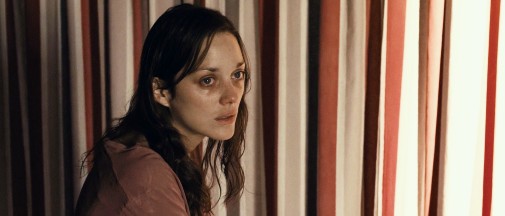
It's from the foundation of this painful situation that Jacques Audiard builds one of recent cinema's grimiest love affairs, a melodrama with dirt smeared on its face. It starts with a call from Stéphanie who's alone, filthy with dry sweat and congealed frustration, A sporadic visit becomes a trip to the beach where the tired amputee smiles again and then new feelings blossom. There's the want for sex, which produces a shy smile when offered and reveals a pitiful shame on the part of a woman who before seemed so in control of her sexuality. There's also thirst for violence and for control, for the autonomy the aquatic tragedy took from her. Not that Cotillard ever allows us to pity Stéphanie. She almost roars at the camera, daring us to defy her, daring us to mellow towards this complicated person.

The extreme physicality of the performance makes it easy to dismiss some of Cotillard's finer choices, but we shouldn't. This is intelligent work, constructed from minute one with character consistency in mind. Cotillard never loses sight of Stéphanie's true self even as her life's shattered and rebuilt. The way the actress uses her body in early scenes, for instance, sets the stage for the trauma of the amputation. How Stéphanie constantly reacts with disgust towards weakness, even when she doesn't verbalize it, makes for a searing character detail when it's she who must be carried as an invalid. Better yet, is the way the actress solves some of the picture's frailties, making sense of an impossible love story and managing to transform Katy Perry's "Fireworks" into a bittersweet hymn of longing.
Even when her back is turned to the camera and she's dancing with a whale, Cotillard's performance is a miraculous thing, full of wonderment and human details drawn in jagged lines. Rust and Bone is a better film for having her in it and the Oscar line-up would have been improved by her presence too.
